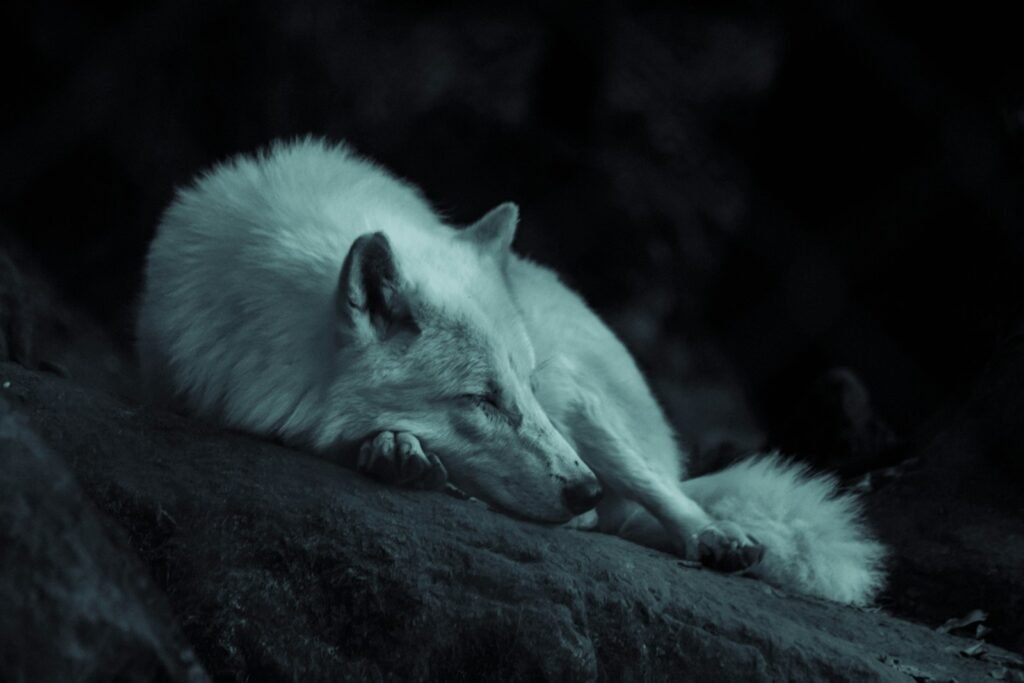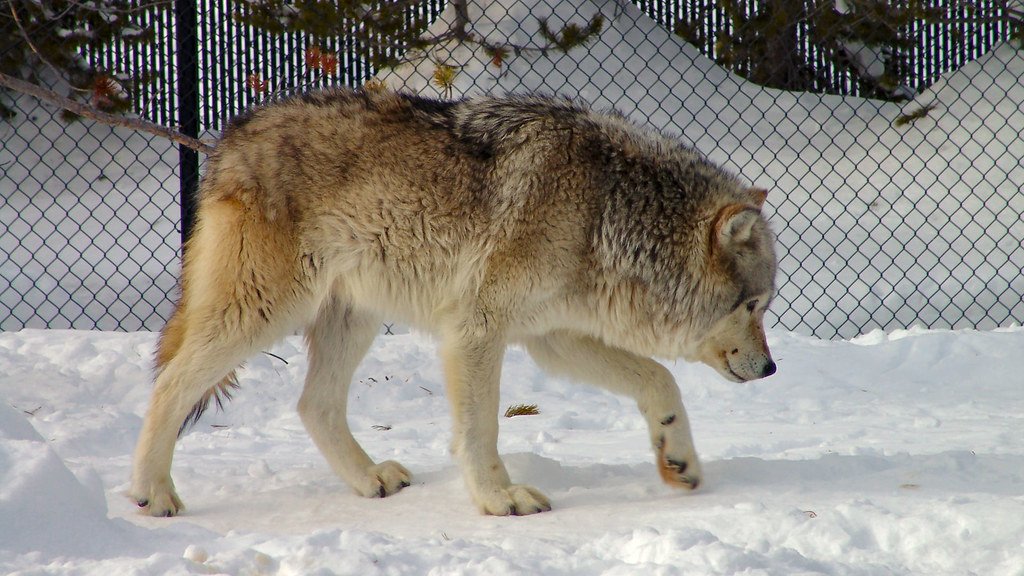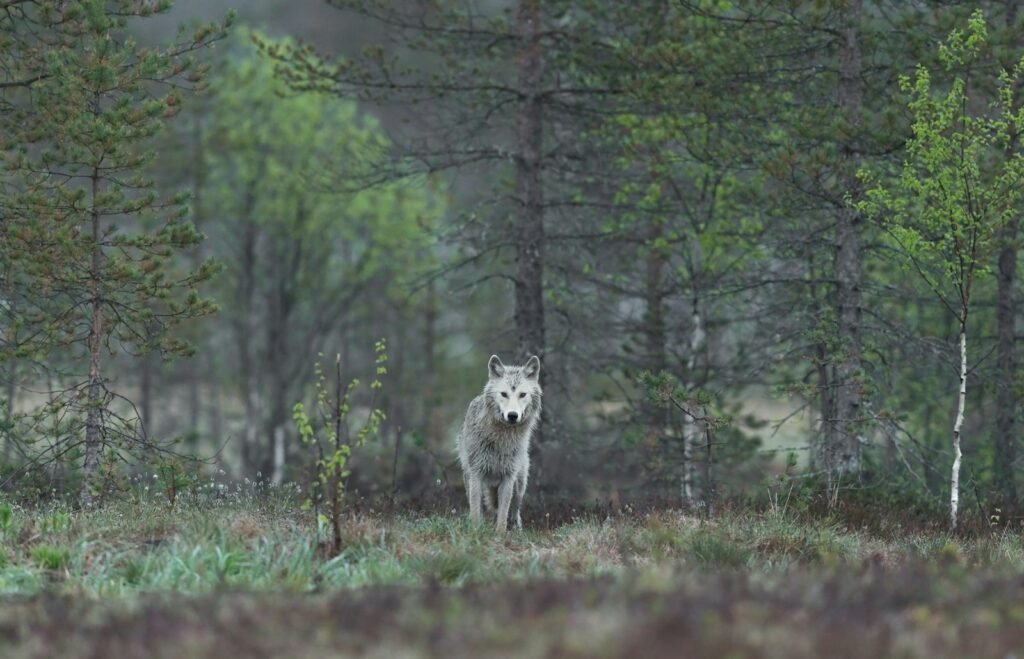Picture this: it’s 1995, and a group of gray wolves steps out of transport cages onto the snowy ground of Yellowstone National Park. These eight wolves had no idea they were about to trigger one of the most remarkable ecological transformations in modern conservation history. For nearly 70 years, their kind had been absent from this legendary landscape, hunted to extinction by the 1920s in a misguided attempt to protect livestock and game animals.
What happened next would challenge everything scientists thought they knew about predator-prey relationships and ecosystem balance. The return of wolves to Yellowstone didn’t just restore a missing piece of the food web – it unleashed a cascade of changes that would reshape rivers, forests, and the very soul of America’s first national park.
The Great Absence: Life Without Wolves

When the last wolf disappeared from Yellowstone in 1926, the ecosystem began a slow but steady decline that would take decades to fully understand. Without their apex predator, elk populations exploded across the park’s northern range, growing from manageable herds to massive congregations of thousands.
These burgeoning elk herds turned into four-legged lawnmowers, systematically stripping away young aspen, willow, and cottonwood trees along riverbanks and valley floors. The once-lush riparian forests that had lined Yellowstone’s waterways began to disappear, replaced by barren landscapes that looked more like overgrazed pastures than pristine wilderness.
Park managers tried desperately to control the situation through culling programs, but shooting elk proved both controversial and ineffective. The ecosystem had lost its natural regulatory mechanism, and artificial interventions couldn’t replicate the complex behavioral patterns that wolves had once imposed on their prey.
The Bold Decision to Bring Them Back

By the 1970s, a growing chorus of scientists and conservationists began advocating for wolf reintroduction. The idea was revolutionary and controversial – deliberately bringing back a predator that humans had spent centuries trying to eliminate. Ranchers feared for their livestock, hunters worried about competition for game, and local communities expressed concerns about safety and economic impacts.
The debate raged for over two decades, involving congressional hearings, environmental impact studies, and passionate arguments from both sides. Finally, in 1995, the first wolves arrived from Alberta, Canada, followed by additional animals in 1996. Thirty-one wolves in total were released into the park, marking the beginning of one of conservation’s most ambitious experiments.
The decision required unprecedented cooperation between governments, scientists, and conservation groups. Every wolf was fitted with radio collars, and teams of researchers prepared to document what would happen when North America’s apex predator returned to its ancestral home.
The Landscape of Fear Takes Hold

Within just a few years of wolf reintroduction, something remarkable began happening across Yellowstone’s ecosystem. The “landscape of fear” concept, previously just a theoretical framework, became strikingly visible reality. Elk herds that had grown complacent during seven decades without predation suddenly had to remember ancient survival instincts.
The wolves didn’t need to kill every elk to create change – their mere presence was enough to alter behavior patterns that had persisted for generations. Elk began avoiding open valley bottoms where they might be vulnerable to attack, instead seeking the safety of higher, more rugged terrain where wolves had difficulty maneuvering.
This behavioral shift had immediate consequences for vegetation. Areas that had been heavily browsed for decades suddenly received relief as elk herds moved away from prime feeding locations. The psychological impact of predation risk proved just as powerful as physical predation itself, creating what ecologists call “the ecology of fear.”
Rivers Begin to Dance Again

Perhaps the most stunning transformation triggered by wolf reintroduction was something nobody had anticipated – the rivers themselves began to change course. As elk pressure decreased in riparian zones, willows and aspens started regenerating along riverbanks for the first time in decades.
These newly established root systems began stabilizing stream banks, reducing erosion and creating more defined channels. Rivers that had become wide, shallow, and meandering during the wolf-free decades started narrowing and deepening, creating the pools and riffles that support diverse aquatic life.
The phenomenon demonstrated how predators can influence not just biological communities but physical landscape features – a connection so profound that scientists coined the term “trophic cascades” to describe it. Yellowstone’s rivers literally began to dance to a different rhythm, one set by the howl of wolves echoing across the valleys.
The Aspen Renaissance

Before wolves returned, finding a young aspen tree in Yellowstone’s northern range was nearly impossible. Elk had systematically browsed every sapling that dared to emerge, preventing forest regeneration for decades. The few surviving aspens were ancient giants, their lower branches stripped bare in what researchers grimly called “the browse line.”
The wolf reintroduction changed everything almost overnight. Within five years, young aspens began sprouting in areas where elk had previously prevented any tree growth. These “exclosures” – areas effectively protected from browsing by wolf presence – became green oases in what had been biological deserts.
The aspen recovery wasn’t just about individual trees; it represented the resurrection of entire forest communities. Aspens provide habitat for countless species, from cavity-nesting birds to small mammals, and their return triggered a renaissance of biodiversity that had been dormant for generations.
Scavenger City: The Ripple Effects

Wolves don’t just kill prey – they create opportunity for dozens of other species through the carcasses they leave behind. In Yellowstone, wolf kills became bustling ecological hubs where ravens, eagles, bears, coyotes, and countless smaller scavengers gathered to feast on leftovers.
Ravens, in particular, developed an almost symbiotic relationship with wolf packs, following them to locate fresh kills and even guiding them to prey in some cases. Grizzly bears, emerging from winter hibernation, learned to track wolves to access high-protein carrion that could mean the difference between survival and starvation.
These scavenging networks created what ecologists call “resource pulses” – concentrated bursts of nutrients that support entire communities of organisms. Even insects benefited, as wolf kills provided breeding sites for flies, which in turn fed countless bird species and their nestlings.
The Coyote Conundrum

Perhaps no species felt the impact of wolf reintroduction more dramatically than coyotes. During the wolf-free decades, coyotes had expanded their ecological niche, becoming Yellowstone’s top predator and growing larger and more pack-oriented than their typical behavior patterns suggested.
When wolves returned, they immediately began competing with coyotes for territory and prey. The larger, more powerful wolves didn’t just outcompete coyotes – they actively killed them, reducing coyote numbers by nearly 50% in some areas. This wasn’t simple competition; it was interspecific warfare.
The coyote population crash had unexpected benefits for smaller mammals like foxes, which had been suppressed by coyote predation. Suddenly, red foxes began reappearing in areas where they hadn’t been seen for years, demonstrating how the return of apex predators can benefit species throughout the food web.
Bears Reclaim Their Throne

Both black bears and grizzly bears experienced dramatic improvements in their situations following wolf reintroduction. Bears discovered that following wolf packs could provide access to fresh meat, especially during the critical spring months when other food sources were scarce.
Grizzly bears, being larger and more dominant than individual wolves, could successfully commandeer wolf kills, forcing entire packs to retreat until the bears had eaten their fill. This dynamic created an unexpected alliance between two apex predators, with bears essentially using wolves as hunting partners.
The improved nutrition from wolf kills helped bear populations recover more quickly, and female bears began producing larger litters with higher survival rates. The presence of wolves had created a more robust and resilient bear population than park managers had seen in decades.
The Beaver Comeback Story

As willows and aspens began regenerating in riparian zones, Yellowstone’s beaver population staged one of the most remarkable comebacks in the park’s history. These ecosystem engineers had been reduced to a single colony by the 1990s, victims of habitat loss caused by elk overbrowsing.
The return of suitable woody vegetation allowed beavers to expand rapidly, building dams that created wetlands and slowed water flow across the landscape. These beaver-modified habitats became biodiversity hotspots, supporting everything from waterfowl to amphibians to countless invertebrate species.
Beaver dams also helped combat climate change effects by storing water during dry periods and reducing flood risks during heavy precipitation events. The wolves had inadvertently helped restore one of nature’s most effective water management systems.
Unexpected Alliances in the Food Web

The return of wolves created surprising partnerships throughout Yellowstone’s ecosystem. Ravens developed such a close relationship with wolf packs that researchers began studying their communication patterns, discovering that ravens could actually influence wolf hunting behavior by alerting them to prey locations.
Even more remarkable was the relationship between wolves and certain plant species. As elk avoided areas with high predation risk, rare wildflowers that hadn’t bloomed in decades began reappearing. These plants, in turn, supported specialized pollinators and created microhabitats for insects and small animals.
The complexity of these relationships challenged traditional ecological thinking, showing that predators don’t just control prey numbers – they orchestrate entire ecological symphonies through their behavioral influences.
The Science Behind the Success

Yellowstone’s wolf reintroduction became a living laboratory for understanding predator-prey dynamics and ecosystem restoration. Scientists from around the world flocked to study the changes, generating hundreds of research papers and fundamentally advancing our understanding of ecological processes.
The research revealed that wolves were selecting not just any elk, but specifically targeting the old, young, and sick individuals – a process that actually strengthened the overall elk population by removing genetically inferior animals. This natural selection pressure helped create more robust and alert elk herds.
Long-term studies showed that the ecological benefits of wolf reintroduction extended far beyond what anyone had imagined. The wolves had essentially rewired the entire ecosystem, creating new patterns of energy flow and nutrient cycling that increased overall biodiversity and ecosystem resilience.
Challenges and Controversies

Despite the ecological success, wolf reintroduction hasn’t been without challenges. Conflicts with livestock outside the park continue to create tension with ranching communities, and some hunters argue that wolf predation has reduced elk numbers below desirable levels in certain areas.
Park managers have had to balance the needs of wolves with other conservation goals, sometimes making difficult decisions about pack management and territory boundaries. The wolves don’t recognize park boundaries, and their expansion into surrounding areas has created complex management challenges.
Political pressures also remain intense, with some state governments pushing for aggressive wolf management policies that conservation groups argue could undermine the reintroduction’s success. The wolves have become symbols in larger debates about wilderness, human-wildlife coexistence, and the role of predators in modern landscapes.
Lessons for Global Conservation

Yellowstone’s wolf reintroduction has become a model for rewilding efforts worldwide. The success story has inspired similar projects in Europe, where wolves are naturally recolonizing former territories, and in other parts of North America where apex predators are being restored to degraded ecosystems.
The project demonstrated that ecosystems have remarkable capacity for self-repair when key species are restored. Rather than requiring intensive management interventions, Yellowstone’s ecosystem essentially fixed itself once wolves were returned to their ecological role.
Scientists now recognize that protecting apex predators isn’t just about saving individual species – it’s about maintaining the ecological processes that keep entire ecosystems healthy and resilient. The wolves taught us that nature’s complexity requires nature’s solutions.
The Continuing Evolution

Nearly three decades after reintroduction, Yellowstone’s wolf population has stabilized at around 100 individuals distributed among eight to ten packs. The dramatic changes of the early years have given way to a more subtle but ongoing process of ecological adjustment and refinement.
New generations of elk have grown up with wolves, developing antipredator behaviors that their parents had to relearn. This behavioral evolution continues to shape how species interact across the landscape, creating ever-more sophisticated patterns of predator-prey relationships.
Climate change now presents new challenges for the wolf-elk-vegetation system, with changing precipitation patterns and temperatures affecting everything from plant growth to prey availability. The wolves’ ability to adapt to these changing conditions will test the long-term sustainability of the reintroduction success.
Modern Yellowstone: A Balanced Ecosystem

Today’s Yellowstone represents something closer to its historical ecological state than had existed for nearly a century. The landscape pulses with natural rhythms – predator and prey, growth and decay, life and death – that had been absent during the wolf-free decades.
Visitors to the park can now witness behaviors and interactions that their grandparents never had the chance to see. The howl of wolves echoing across valleys, the sight of elk nervously scanning ridgelines, and the green corridors of recovering riparian forests all testify to the success of one of conservation’s boldest experiments.
The ecosystem has reached a new equilibrium, not the same as it was before wolves were eliminated, but one that captures the essential ecological processes that make Yellowstone truly wild. The wolves have reclaimed their role as keystone species, and the entire ecosystem is stronger for their presence.
The story of Yellowstone’s wolves reminds us that nature’s complexity often exceeds our understanding, but when we have the courage to restore missing pieces, ecosystems can surprise us with their resilience and beauty. The wolves didn’t just return home – they brought the entire landscape back to life, creating a legacy that will inspire conservation efforts for generations to come. What other missing pieces might be waiting to transform the world around us?




